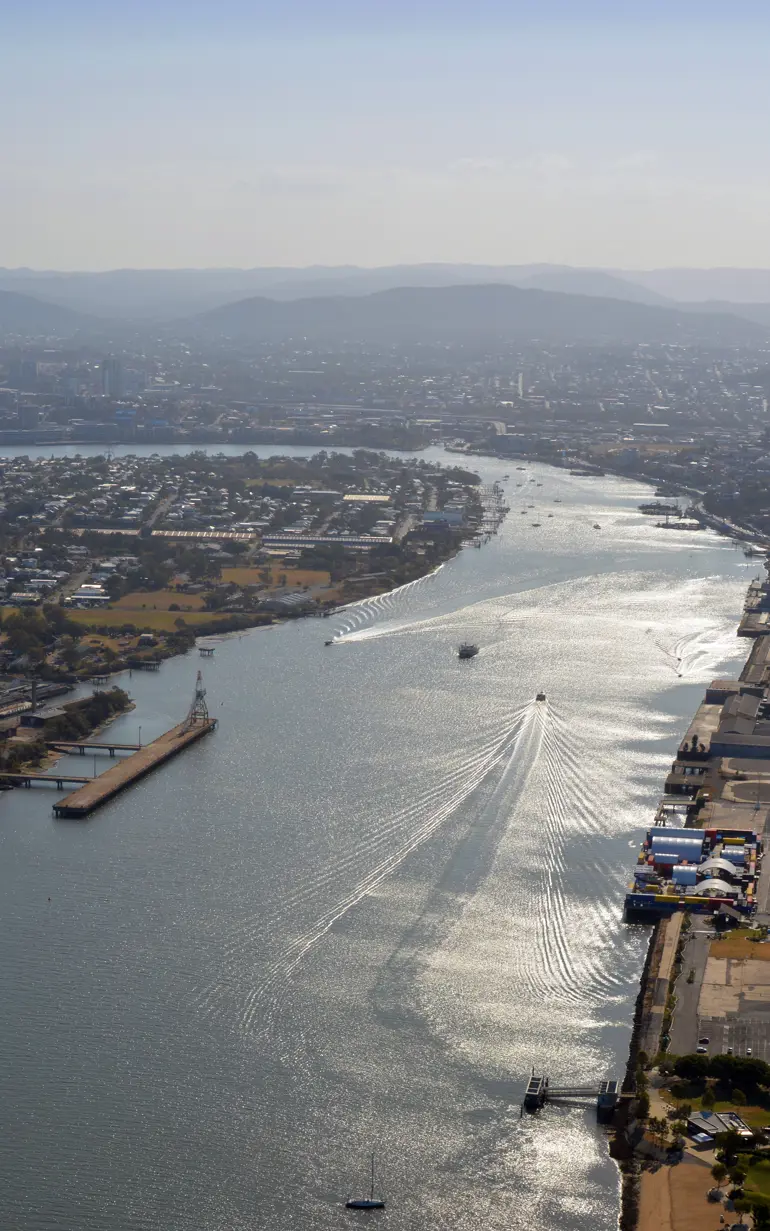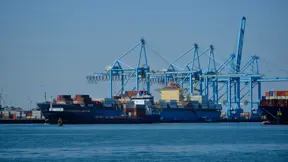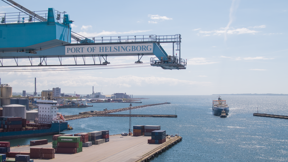
How to reduce carbon footprint of vessel traffic
Port of Brisbane enhances port efficiency and cuts carbon emissions from vessel traffic
At the Port of Brisbane, an innovative collaboration between the port manager, Port of Brisbane Pty Ltd, and DHI has delivered the Green Button – a real-time vessel scheduling and decision-support tool that has demonstrated the potential to enhance port efficiency and reduce carbon emissions from vessel traffic.
By optimising vessel transit through the port channels through taking advantage of sea conditions, full sea trials completed in 2024 confirmed the capacity to facilitate emissions reductions of more than 50% for some vessel transits with an average saving achieved of 2.3 tonnes per participating trial.
Challenge
The global shipping industry is under increasing pressure to decarbonise and reduce its environmental impact. While much work has already been done to optimise blue ocean voyages, the potential in optimising the final transit through the shipping channel has often been overlooked, resulting in unnecessary fuel consumption and emissions in the coastal waters close to the port.
Solution
To tackle these challenges, DHI partnered with the Port of Brisbane to deliver the Green Button – a digital innovation that leverages the physics-based capability of NCOS Online to calculate the most suitable vessel speed profile to utilise local weather and currents to reduce fuel consumption and speed as much as possible while meeting the scheduled arrival and departure time in port. The solution was tested together with project partners A.P. Moller – Maersk, CMA CGM, Poseidon Sea Pilots and Marine Safety Queensland.
The system is built around DHI's operational digital twin NCOS Online platform, which is a physics-based decision support system that is currently operationally supporting the safe and optimised traffic management of large and deep-drafted vessels into port across five continents.
Results
The trial implementation of the Green Button at the Port of Brisbane has yielded measurable potential environmental and operational benefits. When fully implemented, it is expected to enable vessels to reduce speed and avoid queuing, potentially reducing emissions equivalent to the annual carbon footprint of approximately 1,000 Australians.
Shipping operators benefit from lower fuel costs and improved predictability in port operations. And the port itself reduces congestion and enhances throughput efficiency, contributing to its broader sustainability goals.
The Green Button is a scalable solution, demonstrating how digital tools can accelerate the decarbonisation of existing fleets by improving energy efficiency in real-world port operations. The solution was awarded the Innovation Excellence award at the Australian National Infrastructure Awards in 2025.
Client:
Port of Brisbane
Location:
Australia
Related SDG(s):
SDG 9: Build resilient infrastructure, promote inclusive and sustainable industrialisation and foster innovation
SDG 13: Take urgent action to combat climate change and its impacts
SDG 14: Conserve and sustainably use the oceans, seas and marine resources for sustainable development
Technology:
‘Working with DHI on the Green Button has enabled us to translate our sustainability ambitions into real-world impact. This partnership is supporting our efforts to decarbonise port operations while enhancing service predictability for shipping lines.’
Neil Stephens, CEO, Port of Brisbane Pty Ltd (PBPL)
About our client
The Port of Brisbane is one of Australia’s fastest growing container ports and the state’s largest multi-cargo port. Located at the mouth of the Brisbane River, Port of Brisbane is managed and developed by the Port of Brisbane Pty Ltd (PBPL).
You may also like
How can we help?
With our global network of offices, we make sure you get the right answers to your local needs. Tell us about your water challenges and we will get back to you.



